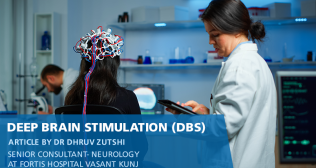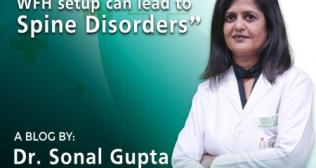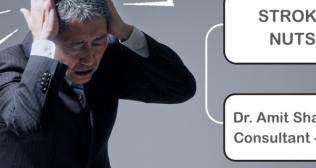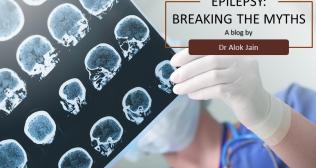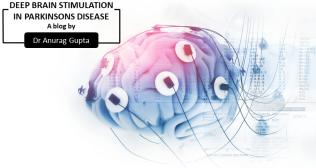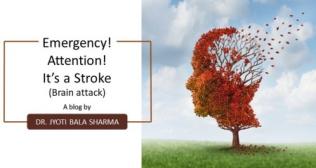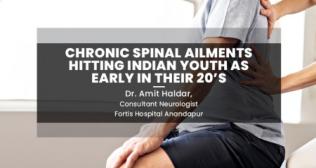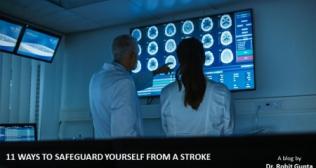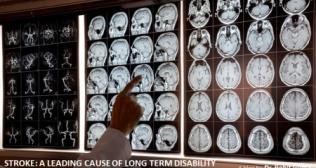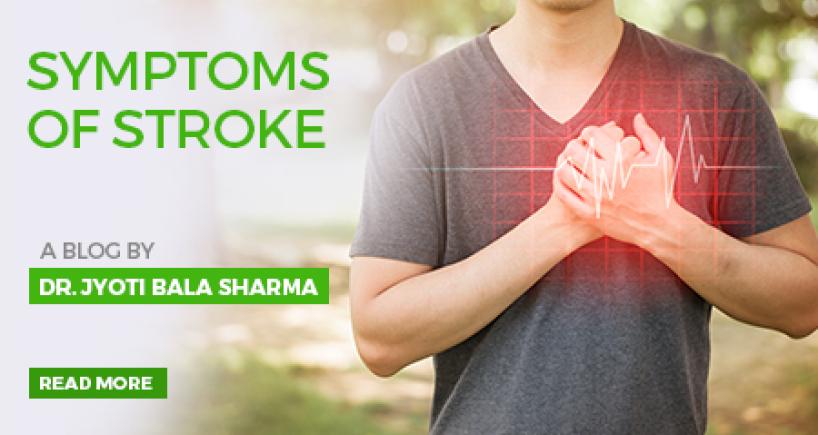
Symptoms of Stroke
Stroke or brain attack occurs when blood supply of brain is cutoff or reduced. It is a medical emergency. Stroke can be effectively treated by clot busting injection within 4.5 hours of onset. The longer the blood flow is interrupted the greater the damage to brain. Immediate treatment can prevent permanent disability and save life. Time is brain. One in 4 persons has life time risk of stroke in India. Every year, 1.8 million people suffer stroke in India, but we have limited resources. People lack awareness about signs and symptoms. Immediate treatment can save lives of people and enhance chances of complete recovery.
What are the symptoms of stroke?
FAST is an easy way to remember the signs of a stroke.
F - Face drooping. One side of the face is drooping or numb. When the person smiles, the smile is uneven.
A - Arm weakness. One arm is weak or numb. When the person lifts both arms at the same time, one arm may drift downward.
S - Speech difficulty. You may see slurred speech or difficulty speaking. The person can't repeat a simple sentence correctly when asked.
T - Time to act FAST. If someone shows any of these symptoms, immediately contact nearest stroke ready hospital. Contact hospital even if the symptom goes away. Immediate treatment enhances the chance of successful recovery. The golden time is 4.5 hours but sooner is better.
OTHER SYMPTOMS OF STROKE
Stroke symptoms always happen suddenly. Others symptoms of stroke may be:
- Problems with vision, such as dimness or loss of vision in one or both eyes
- Dizziness or problems with balance or coordination
- Problems with movement or walking
- Fainting or fits or convulsions
- Sudden severe headaches with no known cause
What is treatment of stroke?
Treatment is most effective when started right away. Emergency treatment after a stroke includes:
- Clot-busting treatment of intravenous thrombolysis. These medicines dissolve the blood clots that cause an ischemic stroke. They can help reduce the damage to brain cells. To be most effective, they must be given within 4.5 hours of a stroke occurring.
- Mechanical thrombectomy. Mechanical thrombectomy is treatment option when large vessel is occluded or clot busting treatment cannot be offered.
Who is at risk of having stroke?
Anyone can have stroke at any age. The age for stroke is receding in younger age group in 30s and 40s. Your chances of having stroke increase if you have certain risk factors. Some risk factors for stroke can be changed or managed, while others can’t.
Risk factors for stroke that can be changed/treated:
High blood pressure. Blood pressure of 140/90 or higher can damage blood vessels (arteries) that supply blood to the brain.
- Heart disease. Heart disease is the second most important risk factor for stroke and the major cause of death among survivors of stroke. Heart disease and stroke have many of the same risk factors.
- Diabetes. People with diabetes are at greater risk for a stroke.
- Smoking. Smoking almost doubles your risk for an ischemic stroke.
- History of transient ischemic attacks. TIAs are often called mini-strokes. They have the same symptoms as stroke, but the symptoms don’t last. If you have had one or more TIAs, you are almost 10 times more likely to have a stroke than someone of the same age and sex who has not had a TIA.
- High blood cholesterol and lipids. High cholesterol levels can contribute to thickening or hardening of the arteries (atherosclerosis) caused by a buildup of plaque. Plaque buildup on the inside of the artery walls can decrease the amount of blood flow to the brain. A stroke occurs if the blood supply is cut off to the brain.
- Lack of exercise and stress. Regular physical activity, like recreational activities have dual benefit of fitness and reducing stress. Yoga and meditation benefit physical and mental health.
- Obesity is a serious medical condition that can cause complications such as metabolic syndrome, high blood pressure, atherosclerosis, heart disease, stroke, diabetes, high cholesterol, cancers and sleep disorders. Even a modest amount of weight loss can help to reduce your increased health risks.
- Excessive alcohol use. More than 2 drinks per day raises your blood pressure. Binge drinking can lead to stroke.
- Abnormal heart rhythm. Some types of heart disease can raise your risk for stroke. Having an irregular heartbeat (atrial fibrillation) is the most powerful and treatable heart risk factor of stroke.
- Obstructive sleep apnoea: OSA is a common condition which involves repeated episodes of partial or complete obstruction of the throat during sleep. When this occurs, the oxygen levels drop, sleep is disturbed and the brain arouses to restore breathing. The arousals are usually so brief that many patients are completely unaware of them. The repeating sleeping and waking pattern means the sufferer will often not get enough sleep leading to problems such as day time sleepiness, decreased libido and irritability.
Risk factors for stroke that can’t be changed:
- Older age. For each decade of life after age 55, your chance of having a stroke more than doubles.
- Gender. Stroke occurs more often in men, but more women than men die from stroke.
- History of prior stroke. You are at higher risk for having a second stroke after you have already had a stroke.
- Heredity or genetics. The chance of stroke is greater in people with a family history of stroke.
Stroke in current scenario:
COVID-19 pandemic and stroke COVID-19 pandemic increased number of stroke patients in 30s, 40s and 50s - the kind of stroke one would have in 70s or 80s. Young patients with no risk factors for stroke may have an increased risk if they have contracted COVID-19, whether or not they are showing symptoms. The COVID-19 pandemic also indirectly increased stroke risk by increased stress level, screen time and reduced the physical activity. Air pollution and stroke Even though exposure to dirty air may cause only an irritation of the nose, eyes or throat or the worsening of a breathing problem in the short term, the long term effects on heart, lungs and blood clotting and blood vessels are largely unnoticed. Medical studies show that air pollution can trigger heart attacks, stroke, and irregular heart rhythms.







